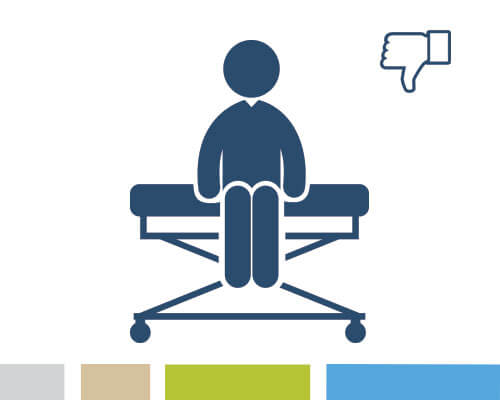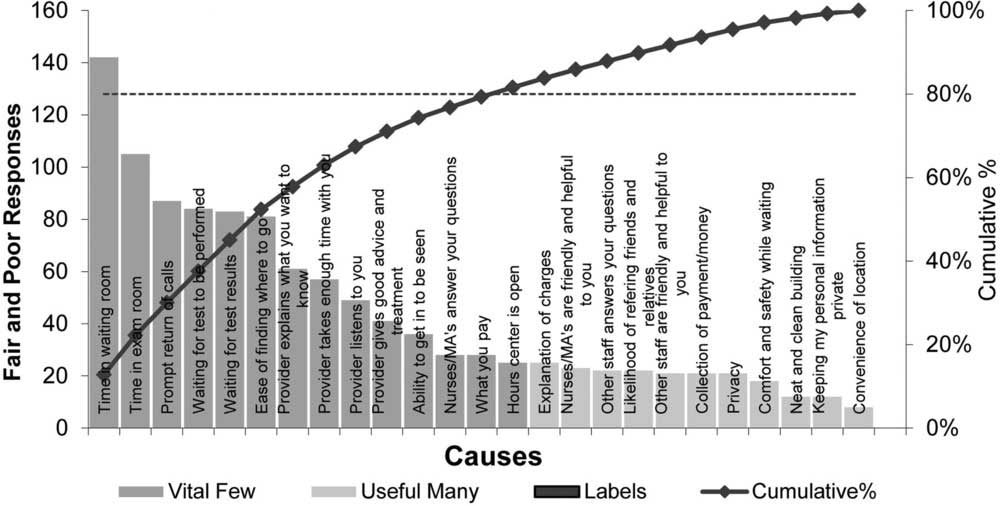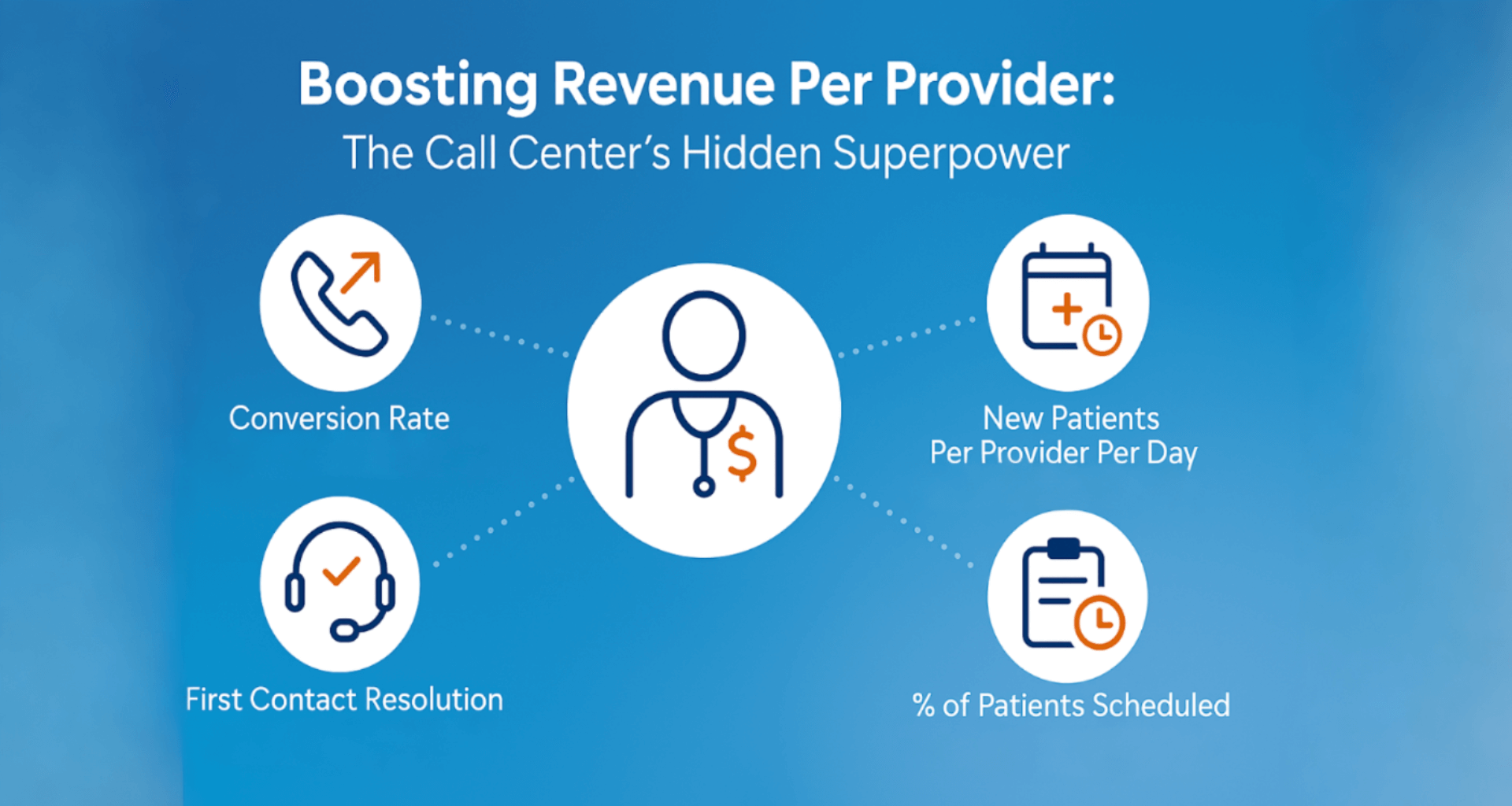
Researchers in Florida found the top 6 factors for patient dissatisfaction for an Adult Primary Care Unit. The purpose of the research was to determine if a Plan-Do-Study-Act (PDSA) model would improve patient satisfaction. Even though the study had mixed results, they uncovered fantastic information on the drivers of patient satisfaction.
Study Design
547 patients responded to a patient satisfaction questionnaire created for use in Federally Qualified Community Health Centers. This questionnaire is thorough. It covers 29 factors which can be summarized as follows:
- Doctor interaction: Is the doctor friendly? Does he listen and spend time with patients? Does he communicate well?
- Staff interaction: Are the staff competent, friendly, and helpful?
- Telephone communication: are calls returned promptly, does staff explain the office location, and are test results communicated clearly?
- Facility: Is the clinic easy to find, safe, comfortable, and clean?
- Wait times: How long do patients wait in the waiting room? In the exam room? How long to they wait for tests?
- Payment processing: Is there clear and transparent information about cost and an easy system to make payments?
The study was organized as a before-after study, with about half the patients responding before the stated improvements, and about half of the patients after. By measuring improvements along each of the 29 factors, the researchers were able to attribute the drivers for patient dissatisfaction.
Top Culprits: wait time and poor telephone communication
Over 50% of the cases where a patient was dissatisfied, the source of dissatisfaction can be traced to one of only six issues (in order):
- Wait time in the waiting room
- Wait time in the exam room
- Promptness in returning calls
- Wait time for a test to be performed
- Wait time for test results
- Clarity of instructions on where to go
All six major concerns driving patient dissatisfaction are rooted in wait time or poor telephone communication.
You can see the full chart here:

I’ve written before on 4 ways smart telephone triage can improve patient experience. Today we’ll look at some basic steps you can take in the office.
3 Simple Steps You Can Start Today
Given the many competing demands on a doctor’s time and on the clinic staff, it is not always possible to meet all patients’ expectations. Even when the clinic is running late, a recent survey of more than 5,000 patients in the US found simple things you can do to mitigate a patient’s dissatisfaction.
- Set expectations
80% of patients would be less frustrated if they knew how long they were expected to wait. Although patients don’t like waiting at all, setting expectations early and clearly would help. Give a fair estimate but one that is realistic. - Offer options
40% of patients may prefer to see another physician in the practice or to reschedule an appointment to avoid a long wait. While other patients will not prefer them, offering patients options is one way of recognizing waiting is an inconvenience. - Apologize
Apologizing for keeping a patient waiting tells the patient you respect their time and their patience. 70% of patients said a simple apology would alleviate frustration. It is an easy way to keep patients more satisfied and for them to feel they are respected.
3 Advanced Steps That Solve the Problem
We at Keona Health believe that patient dissatisfaction is deeply tied to staff dissatisfaction. Your patients' experience is fractured because your staff experience is fractured. The patients have to wait and are confused because the processes your staff has to navigate are complicated and confusing. Smoothing out the check-in process would go a long way to reducing in-office wait times. Waiting for the test is exacerbated by the complexities in getting physician orders and financial prerequisites to the tests. If your telephone staff weren't navigating many responsibilities plus many software packages.
The advanced solutions involve digital transformation that starts with 3 steps:
- Consolidate the tools into one common platform
A Healthcare CRM designs workspaces for your users, and consolidates all your tools into a single interface. - Document the workflows and write down the rules
The workflows and rules are entered into the decision support system. This enhances consistency, quality, and reduces training time. - Automate the complicated workflows
The real complicated workflows, like scheduling the tests and procedures, or nurse triage and health education, require advanced automation dedicated to those functions to smooth out the process. That is why Keona Health has built Care Desk products specific to Intelligent Scheduling, Referrals, and Nurse Triage.
READ STORIES OF HOW OUR CLIENTS TRANFORMED THEIR PRACTICE
SEE THE FULL STUDY RESULTS HEREHow have you been able to reduce patient frustration? I’d love to hear your thoughts at stephen@keonahealth.com.
You May Be Interested In
7 Ways to Tick Off Telehealth PatientsThe 3 Ways to Address Patient Scheduling Errors
About Keona Health
At Keona Health, we believe that relationships matter. We know that a clinic’s triage system can test a patient-doctor relationship, especially if a patient cannot easily get the help he or she is seeking. Keona Health offers healthcare software and automation solutions to ease the burden of telephone triage on medical practices and help medical professionals better communicate with patients.
Posted By

Stephen Dean is COO of Keona Health, where he’s spent 13 years building AI systems that transform patient access. Before “agentic AI” was a term, his team was deploying autonomous systems that now handle millions of patient conversations annually.
Related Post
July 30, 2025
when patients call, they’re not just dialing a number—they’re reaching for help. and...
April 10, 2025
in healthcare, every interaction is a decision point—one that can impact outcomes,...


